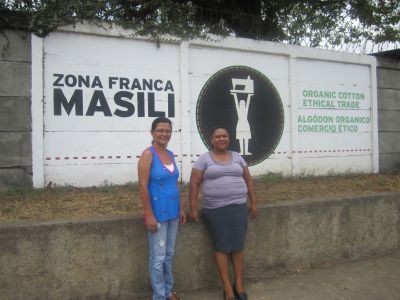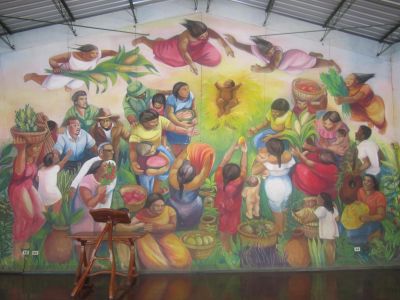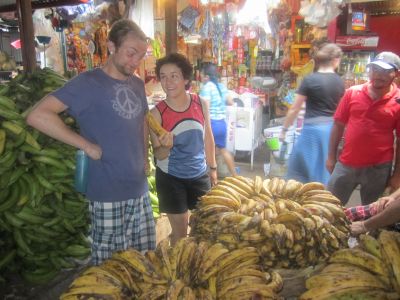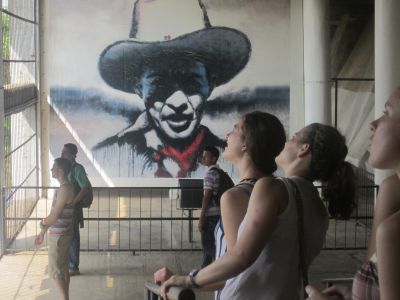Our Day in Managua

After an early 6:45 AM rendezvous at Casa Goshen, our group set out for a long day in Managua. Our first stop was a special maquila called Zona Franca Masili. This maquila is unique in that it was founded and built by 40 women who were relocated to Managua after losing everything they owned in the devastation of Hurricane Mitch in 1998. Ten of those women continue to be involved in the work of the maquila today. While many maquilas in the area would be more commonly known as sweatshops, this small operation ensures that the workers, most of whom are also co-owners, are well cared for and treated with respect. The maquila produces organic t-shirts that are sold in the US, Canada and Europe. Although the maquila is small, the women are determined to keep it going. After touring the factory the group was also given a short tour of the barrio where most of the workers live. This is an area known as Barrio Nueva Vida [new life community], because nearly all of its inhabitants are people who have been relocated to the area due to natural disasters.

From the maquila, the group moved on to the Cultural Center of Batahola Norte. This is a community center originally started by a Catholic priest and nun and now run by a group known as Friends of Batahola. The center serves the community of Batahola Norte by providing services such as music lessons, a public library, English classes for adults, educational scholarships for local youth, and a variety of artistic projects. Joe, the director of the Center, described it as an avenue for the children and adults in the area to experience things that we perhaps take for granted in the states. Having access to musical instruments or books for both leisure reading or study are things that often are out of reach for many people in the barrio. Kelsey, a GC alum who visited the center when she was on SST in 2012, is currently working at the center for a two-year term.

Finally it was time for lunch! But after a nice and filling lunch at De Colores, the group was taken to a large food market and given the challenge of buying enough food to feed a family of six three meals each for one day on 60 córdobas, which amounts to just a little over $2 and is the typical daily income for most Nicaraguan families. Working in pairs, the students descended on the market, practicing both their language and management skills. It was entertaining to watch them carefully decide upon their food choices, doing their best to make their money stretch. Many quickly realized that certain items, such as a delicious pineapple, were out of reach as they planned three meals for each of their six family members.

Our last stop of the day was to Tiscapa. Set high atop a hill overlooking Managua, this area is the former residence of the Somoza family, the dictatorial dynasty that ruled Nicaragua for more than 40 years. Tiscapa provided the students the opportunity to walk through some of the ruins of the mansion as well as visit an exhibit on Augusto César Sandino, a highly influential revolutionary leader who was last seen alive here before being assassinated during peace talks with Somoza in 1934. The exhibit also told tales of other political dissidents who were imprisoned and tortured at Tiscapa. Aside from the ruins of the Somoza bunker, Tiscapa is known for it 59-foot statue of Sandino with his easily-recognizable cowboy hat. This last stop added visual and physical context to the many things we have heard and read in the past week about Nicaragua’s tumultuous political history.
Jen and Lisa


































